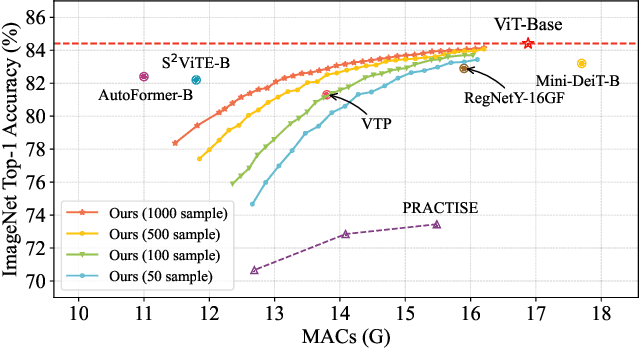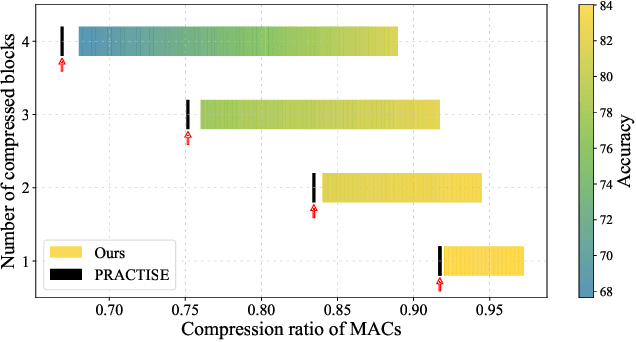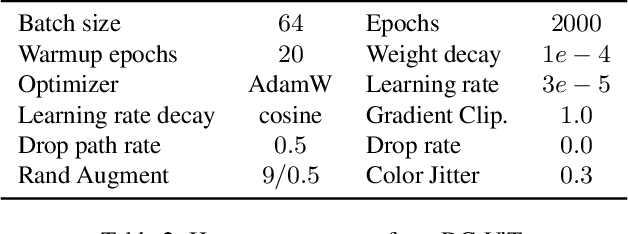Hanxiao Zhang
TopoSculpt: Betti-Steered Topological Sculpting of 3D Fine-grained Tubular Shapes
Sep 04, 2025Abstract:Medical tubular anatomical structures are inherently three-dimensional conduits with lumens, enclosing walls, and complex branching topologies. Accurate reconstruction of their geometry and topology is crucial for applications such as bronchoscopic navigation and cerebral arterial connectivity assessment. Existing methods often rely on voxel-wise overlap measures, which fail to capture topological correctness and completeness. Although topology-aware losses and persistent homology constraints have shown promise, they are usually applied patch-wise and cannot guarantee global preservation or correct geometric errors at inference. To address these limitations, we propose a novel TopoSculpt, a framework for topological refinement of 3D fine-grained tubular structures. TopoSculpt (i) adopts a holistic whole-region modeling strategy to capture full spatial context, (ii) first introduces a Topological Integrity Betti (TIB) constraint that jointly enforces Betti number priors and global integrity, and (iii) employs a curriculum refinement scheme with persistent homology to progressively correct errors from coarse to fine scales. Extensive experiments on challenging pulmonary airway and Circle of Willis datasets demonstrate substantial improvements in both geometry and topology. For instance, $\beta_{0}$ errors are reduced from 69.00 to 3.40 on the airway dataset and from 1.65 to 0.30 on the CoW dataset, with Tree length detected and branch detected rates improving by nearly 10\%. These results highlight the effectiveness of TopoSculpt in correcting critical topological errors and advancing the high-fidelity modeling of complex 3D tubular anatomy. The project homepage is available at: https://github.com/Puzzled-Hui/TopoSculpt.
Shape-aware Sampling Matters in the Modeling of Multi-Class Tubular Structures
Jun 14, 2025Abstract:Accurate multi-class tubular modeling is critical for precise lesion localization and optimal treatment planning. Deep learning methods enable automated shape modeling by prioritizing volumetric overlap accuracy. However, the inherent complexity of fine-grained semantic tubular shapes is not fully emphasized by overlap accuracy, resulting in reduced topological preservation. To address this, we propose the Shapeaware Sampling (SAS), which optimizes patchsize allocation for online sampling and extracts a topology-preserved skeletal representation for the objective function. Fractal Dimension-based Patchsize (FDPS) is first introduced to quantify semantic tubular shape complexity through axis-specific fractal dimension analysis. Axes with higher fractal complexity are then sampled with smaller patchsizes to capture fine-grained features and resolve structural intricacies. In addition, Minimum Path-Cost Skeletonization (MPC-Skel) is employed to sample topologically consistent skeletal representations of semantic tubular shapes for skeleton-weighted objective functions. MPC-Skel reduces artifacts from conventional skeletonization methods and directs the focus to critical topological regions, enhancing tubular topology preservation. SAS is computationally efficient and easily integrable into optimization pipelines. Evaluation on two semantic tubular datasets showed consistent improvements in both volumetric overlap and topological integrity metrics.
Temporal Differential Fields for 4D Motion Modeling via Image-to-Video Synthesis
May 22, 2025Abstract:Temporal modeling on regular respiration-induced motions is crucial to image-guided clinical applications. Existing methods cannot simulate temporal motions unless high-dose imaging scans including starting and ending frames exist simultaneously. However, in the preoperative data acquisition stage, the slight movement of patients may result in dynamic backgrounds between the first and last frames in a respiratory period. This additional deviation can hardly be removed by image registration, thus affecting the temporal modeling. To address that limitation, we pioneeringly simulate the regular motion process via the image-to-video (I2V) synthesis framework, which animates with the first frame to forecast future frames of a given length. Besides, to promote the temporal consistency of animated videos, we devise the Temporal Differential Diffusion Model to generate temporal differential fields, which measure the relative differential representations between adjacent frames. The prompt attention layer is devised for fine-grained differential fields, and the field augmented layer is adopted to better interact these fields with the I2V framework, promoting more accurate temporal variation of synthesized videos. Extensive results on ACDC cardiac and 4D Lung datasets reveal that our approach simulates 4D videos along the intrinsic motion trajectory, rivaling other competitive methods on perceptual similarity and temporal consistency. Codes will be available soon.
Multi-Class Segmentation of Aortic Branches and Zones in Computed Tomography Angiography: The AortaSeg24 Challenge
Feb 07, 2025



Abstract:Multi-class segmentation of the aorta in computed tomography angiography (CTA) scans is essential for diagnosing and planning complex endovascular treatments for patients with aortic dissections. However, existing methods reduce aortic segmentation to a binary problem, limiting their ability to measure diameters across different branches and zones. Furthermore, no open-source dataset is currently available to support the development of multi-class aortic segmentation methods. To address this gap, we organized the AortaSeg24 MICCAI Challenge, introducing the first dataset of 100 CTA volumes annotated for 23 clinically relevant aortic branches and zones. This dataset was designed to facilitate both model development and validation. The challenge attracted 121 teams worldwide, with participants leveraging state-of-the-art frameworks such as nnU-Net and exploring novel techniques, including cascaded models, data augmentation strategies, and custom loss functions. We evaluated the submitted algorithms using the Dice Similarity Coefficient (DSC) and Normalized Surface Distance (NSD), highlighting the approaches adopted by the top five performing teams. This paper presents the challenge design, dataset details, evaluation metrics, and an in-depth analysis of the top-performing algorithms. The annotated dataset, evaluation code, and implementations of the leading methods are publicly available to support further research. All resources can be accessed at https://aortaseg24.grand-challenge.org.
A Digitalized Atlas for Pulmonary Airway
Dec 15, 2024



Abstract:In this work, we proposed AirwayAtlas, which is an end-to-end pipeline for automatic extraction of airway anatomies with lobar, segmental and subsegmental labeling. A compact representation, AirwaySign, is generated based on diverse features of airway branches. Experiments on multi-center datasets validated the effectiveness of AirwayAtlas. We also demonstrated that AirwaySign is a powerful tool for correlation analysis on pulmonary diseases.
Diffusion Product Quantization
Nov 19, 2024Abstract:In this work, we explore the quantization of diffusion models in extreme compression regimes to reduce model size while maintaining performance. We begin by investigating classical vector quantization but find that diffusion models are particularly susceptible to quantization error, with the codebook size limiting generation quality. To address this, we introduce product quantization, which offers improved reconstruction precision and larger capacity -- crucial for preserving the generative capabilities of diffusion models. Furthermore, we propose a method to compress the codebook by evaluating the importance of each vector and removing redundancy, ensuring the model size remaining within the desired range. We also introduce an end-to-end calibration approach that adjusts assignments during the forward pass and optimizes the codebook using the DDPM loss. By compressing the model to as low as 1 bit (resulting in over 24 times reduction in model size), we achieve a balance between compression and quality. We apply our compression method to the DiT model on ImageNet and consistently outperform other quantization approaches, demonstrating competitive generative performance.
Topology-Aware Exploration of Circle of Willis for CTA and MRA: Segmentation, Detection, and Classification
Oct 21, 2024



Abstract:The Circle of Willis (CoW) vessels is critical to connecting major circulations of the brain. The topology of the vascular structure is clinical significance to evaluate the risk, severity of the neuro-vascular diseases. The CoW has two representative angiographic imaging modalities, computed tomography angiography (CTA) and magnetic resonance angiography (MRA). TopCow24 provided 125 paired CTA-MRA dataset for the analysis of CoW. To explore both CTA and MRA images in a unified framework to learn the inherent topology of Cow, we construct the universal dataset via independent intensity preprocess, followed by joint resampling and normarlization. Then, we utilize the topology-aware loss to enhance the topology completeness of the CoW and the discrimination between different classes. A complementary topology-aware refinement is further conducted to enhance the connectivity within the same class. Our method was evaluated on all the three tasks and two modalities, achieving competitive results. In the final test phase of TopCow24 Challenge, we achieved the second place in the CTA-Seg-Task, the third palce in the CTA-Box-Task, the first place in the CTA-Edg-Task, the second place in the MRA-Seg-Task, the third palce in the MRA-Box-Task, the second place in the MRA-Edg-Task.
LNQ 2023 challenge: Benchmark of weakly-supervised techniques for mediastinal lymph node quantification
Aug 19, 2024



Abstract:Accurate assessment of lymph node size in 3D CT scans is crucial for cancer staging, therapeutic management, and monitoring treatment response. Existing state-of-the-art segmentation frameworks in medical imaging often rely on fully annotated datasets. However, for lymph node segmentation, these datasets are typically small due to the extensive time and expertise required to annotate the numerous lymph nodes in 3D CT scans. Weakly-supervised learning, which leverages incomplete or noisy annotations, has recently gained interest in the medical imaging community as a potential solution. Despite the variety of weakly-supervised techniques proposed, most have been validated only on private datasets or small publicly available datasets. To address this limitation, the Mediastinal Lymph Node Quantification (LNQ) challenge was organized in conjunction with the 26th International Conference on Medical Image Computing and Computer Assisted Intervention (MICCAI 2023). This challenge aimed to advance weakly-supervised segmentation methods by providing a new, partially annotated dataset and a robust evaluation framework. A total of 16 teams from 5 countries submitted predictions to the validation leaderboard, and 6 teams from 3 countries participated in the evaluation phase. The results highlighted both the potential and the current limitations of weakly-supervised approaches. On one hand, weakly-supervised approaches obtained relatively good performance with a median Dice score of $61.0\%$. On the other hand, top-ranked teams, with a median Dice score exceeding $70\%$, boosted their performance by leveraging smaller but fully annotated datasets to combine weak supervision and full supervision. This highlights both the promise of weakly-supervised methods and the ongoing need for high-quality, fully annotated data to achieve higher segmentation performance.
Similarity is Not All You Need: Endowing Retrieval Augmented Generation with Multi Layered Thoughts
May 30, 2024



Abstract:In recent years, large language models (LLMs) have made remarkable achievements in various domains. However, the untimeliness and cost of knowledge updates coupled with hallucination issues of LLMs have curtailed their applications in knowledge intensive tasks, where retrieval augmented generation (RAG) can be of help. Nevertheless, existing retrieval augmented models typically use similarity as a bridge between queries and documents and follow a retrieve then read procedure. In this work, we argue that similarity is not always the panacea and totally relying on similarity would sometimes degrade the performance of retrieval augmented generation. To this end, we propose MetRag, a Multi layEred Thoughts enhanced Retrieval Augmented Generation framework. To begin with, beyond existing similarity oriented thought, we embrace a small scale utility model that draws supervision from an LLM for utility oriented thought and further come up with a smarter model by comprehensively combining the similarity and utility oriented thoughts. Furthermore, given the fact that the retrieved document set tends to be huge and using them in isolation makes it difficult to capture the commonalities and characteristics among them, we propose to make an LLM as a task adaptive summarizer to endow retrieval augmented generation with compactness-oriented thought. Finally, with multi layered thoughts from the precedent stages, an LLM is called for knowledge augmented generation. Extensive experiments on knowledge-intensive tasks have demonstrated the superiority of MetRag.
Dense Vision Transformer Compression with Few Samples
Mar 27, 2024



Abstract:Few-shot model compression aims to compress a large model into a more compact one with only a tiny training set (even without labels). Block-level pruning has recently emerged as a leading technique in achieving high accuracy and low latency in few-shot CNN compression. But, few-shot compression for Vision Transformers (ViT) remains largely unexplored, which presents a new challenge. In particular, the issue of sparse compression exists in traditional CNN few-shot methods, which can only produce very few compressed models of different model sizes. This paper proposes a novel framework for few-shot ViT compression named DC-ViT. Instead of dropping the entire block, DC-ViT selectively eliminates the attention module while retaining and reusing portions of the MLP module. DC-ViT enables dense compression, which outputs numerous compressed models that densely populate the range of model complexity. DC-ViT outperforms state-of-the-art few-shot compression methods by a significant margin of 10 percentage points, along with lower latency in the compression of ViT and its variants.
 Add to Chrome
Add to Chrome Add to Firefox
Add to Firefox Add to Edge
Add to Edge